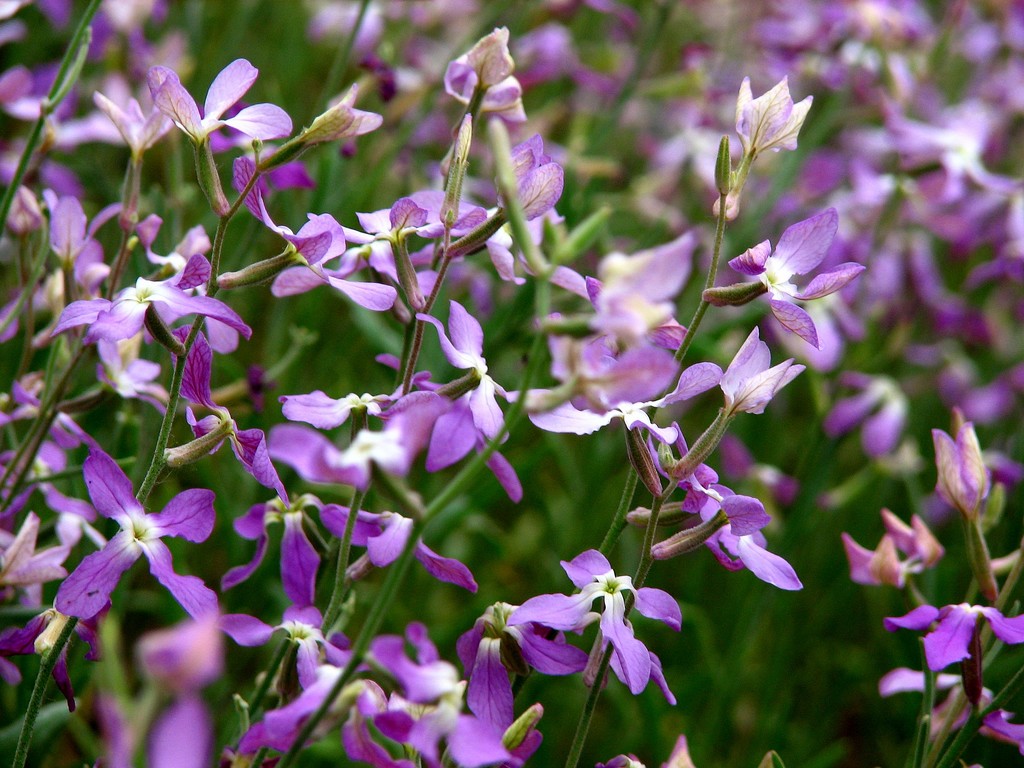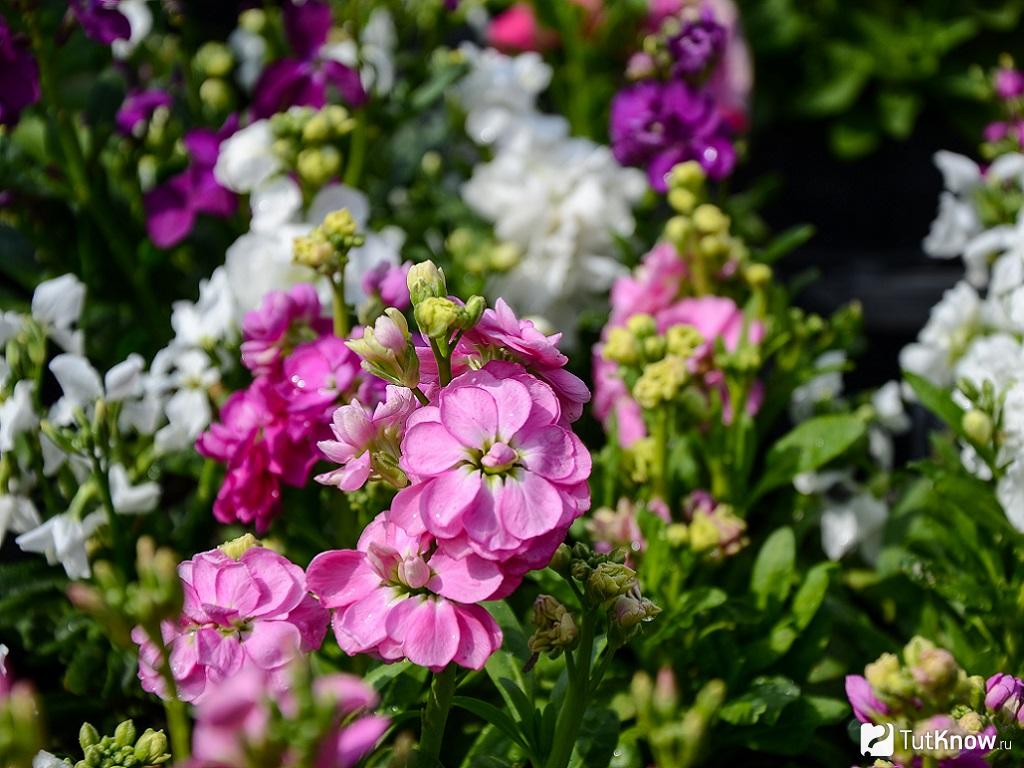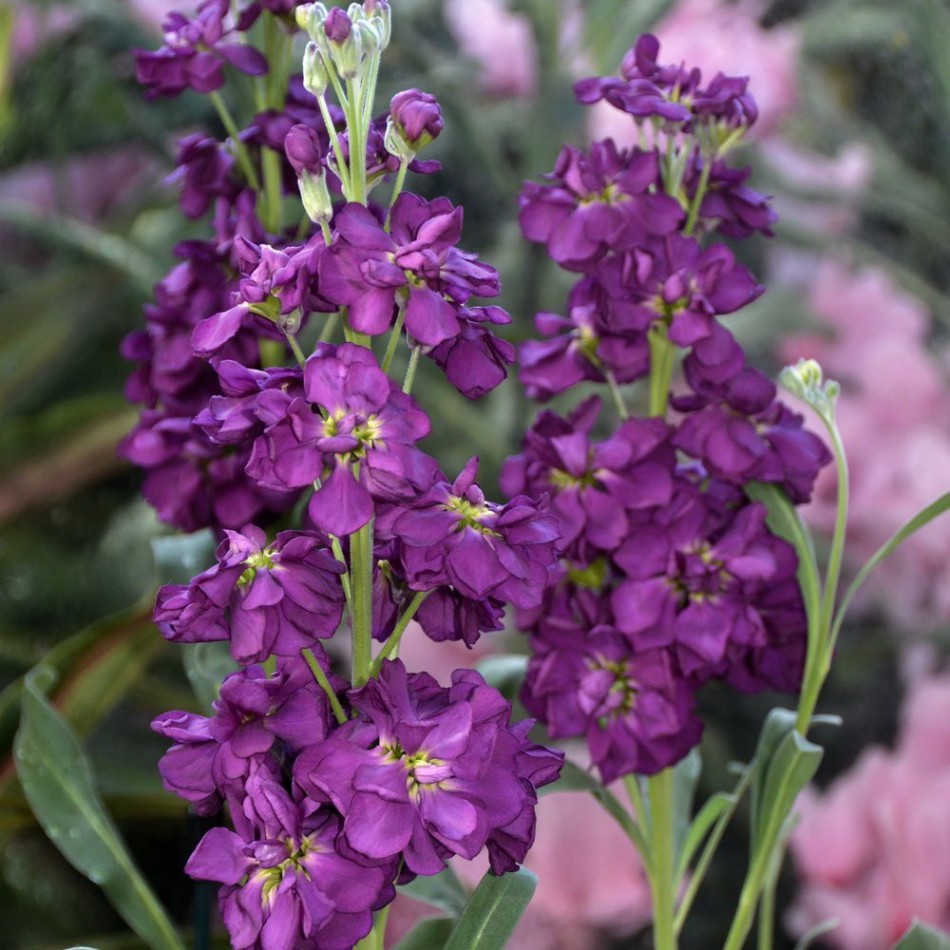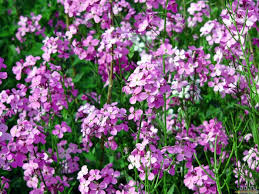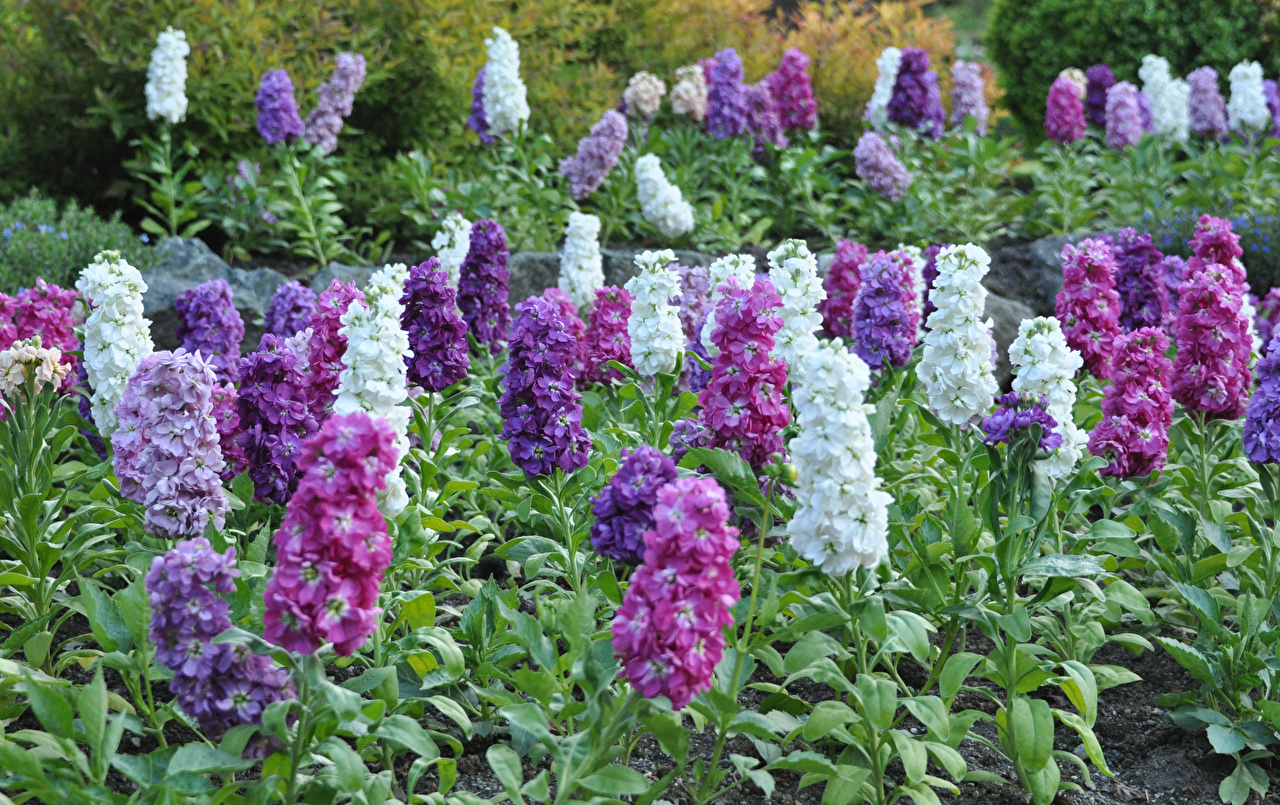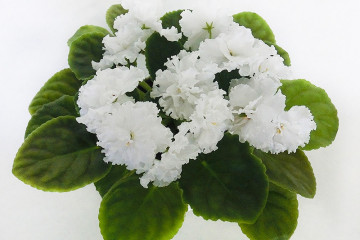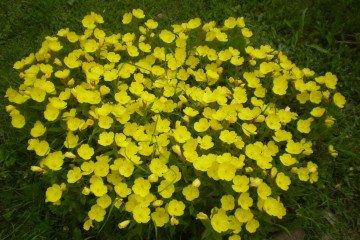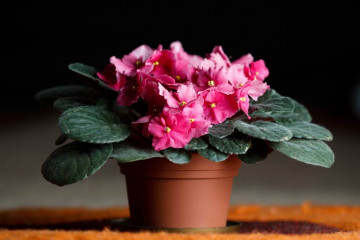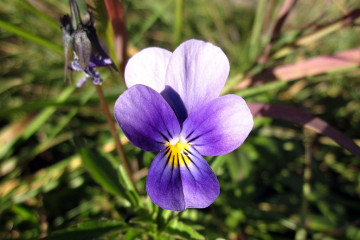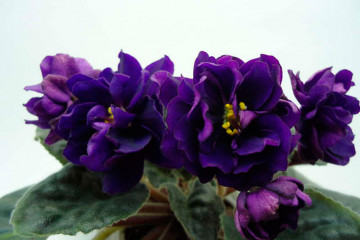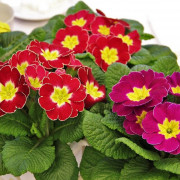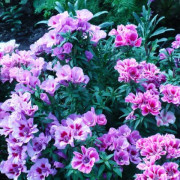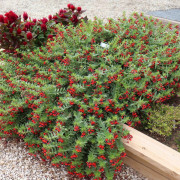Mattiola night violet - a flower with a wonderful scent
Content:
Mattiola, levkoy or night violet is a herbaceous plant native to the Mediterranean. Matiola is nicknamed the night violet due to the fact that closer to night its aroma is significantly enhanced.
Mattiola - features and description
In the last century, Mattiola (Night Violet / Levkoy) grew in many gardens and parks. Today - the flower is not at all in vogue. But some flower lovers find old rave records of the plant and become interested in the unusual flower.
Mattiola is one of the plants that most closely matches the classic park style, it can be both an annual plant and a perennial. It grows, as a rule, in rectilinear shrubs that have bare fleece branched stems.
The height of the stems sometimes reaches 80 cm, but more often they are somewhat lower. Leaves on a stem with whole or serrated edges, lanceolate and oblong.
Flowers can have a wide variety of colors:
- white,
- pink,
- purple,
- yellow.
The inflorescences are simple, there are also double ones, which are collected in ears.
The flowering period falls in June-November, depending on the growing conditions and the specific species.
After flowering, pods-fruits are formed in the inflorescence, in them - narrow-winged and flat seeds.
Not terry varieties of mattiola are excellent melliferous plants, but terry varieties are refined and modest decorations of a flower garden.
A beautiful plant can be planted in your garden, since the flower is unpretentious and it is not difficult to care for it.
The history of the appearance of the flower Levkoy
An incredibly humble, beautiful and fragrant flower originally from ancient Greece.
The name Levkoy means "white, light". The plant began to be called Matthiola later - in the first half of the 18th century.
The name "Mattiola" is borrowed from the name of the famous botanist Pietro Andrea Gregorio Mattioli. He deserved such an honor by the fact that during his lifetime he was engaged in a detailed description of plants, he published several books.
Common varieties
Today Mattiola has more than 50 species, of which 600 varieties have been bred, which are conventionally divided into:
- dwarf,
- medium,
- high.
You can also divide plants into double and simple.
Among the most popular varieties of matthiola:
- Two-horned matthiola. Perennial.
- Gray-haired night violet. Perennial.
- Fragrant levkoy. An annual plant.
Matthiola in the open field - features
Levkoy is unpretentious in care, but still it is worth paying attention to the recommendations of flower lovers before going to the store for the seeds of such an incredible plant.
- Lighting
The night violet is so named that it is undemanding to light.
But if you want to enjoy its dense flowering, it should take a place in the sun on the garden bed.
- Watering
Poor drought tolerance. It is important not to miss watering time. Watering should be systematic, preferably in the morning.
An important feature is that it is advisable to water it in two passes, with a break of 10 minutes.
- Spraying
As a spraying, a solution based on wood ash is suitable, which will protect Matiola from the attack of insects. No other spraying is required.
- Humidity
Does not tolerate too wet soil - root decay immediately begins. For this reason, it is advised never to water Levka in the evening.
- Top dressing
As a rule, they do not require special feeding during growth. But gardeners are advised to add wood ash before planting in the ground. Apply mineral fertilizers to the soil no more than 8 times a season, depending on the soil. Phosphorus-potassium supplements are very useful, especially before flowering.
Flowering period
Each Mattiola variety blooms differently, for example:
- Two-horned mattiola blooms from June to August. During this period, the inflorescences are like quatrefoils. The petals are colored lilac or light pink and have an intense aroma.
- The gray levkoy has a ligneous stem, on which double inflorescences of pink, blue, white and yellow flowers flutter with corollas. You can also find annuals with deep purple and lilac flowers.
- Fragrant levkoy blooms in early summer, has simple yellow-brown buds that open after sunset.
Growing matthiola seeds
Having bought night violets, how to plant them in the garden or vegetable garden? This plant is so clear and uncomplicated that it is perfect for an inexperienced gardener.
But it is worth noting that of all the difficulties, the most difficult is the selection of seedlings with double flowers. Experienced gardeners can distinguish them already at the cotyledon stage. Leaves of common varieties are larger, rich green. While the seedlings are with double flowers, they are smaller and dark green.
Growing levkoy in the open field
The wonderful Levkoy is not whimsical and is able to adapt to any soil. It is especially successful to grow it in fertile, well-lit areas of the site with organized drainage. From soil, he prefers loam or sandy soil with a neutral or slightly acidic reaction.
Also, this culture is quite demanding on the level of humidity. To achieve full flowering from matthiola with insufficient watering will not work.
In addition, this culture does not tolerate transplantation very well.
Matthiola is best planted along the edge of taller annuals, and it is also very beneficial to place it along arbors or paths. This will allow you to enjoy the scent in the evening.
Growing matthiola in pots and transplanting it outdoors
Matthiola for seedlings must be grown by sowing seeds in containers or boxes with a moist substrate in which future seedlings will emerge. The substrate should consist of sand and turf soil in a ratio of 1/3.
Further care of the seedlings consists in the timely watering and loosening of the soil. When growing gray-haired matthiola, it is very important to keep the soil in a moderately moist state, since it is quite easily affected by such a dangerous fungal disease as black leg.
A month before planting, the seedlings should begin to harden. To do this, flowers are displayed on a terrace, balcony or veranda during the daytime. Subsequently, well-hardened seedlings of levkoy easily tolerate recurrent frosts down to -5 ° C.
The hardened plants are planted in a permanent place in early or mid-May. More accurate dates depend on the weather conditions of each specific region.
Landing features
Flowers of night violets with a wonderful smell emanating after sunset, it is better to sow in dense bushes, then you get beautiful groups of silvery-green shoots.
To enjoy the aroma more, they are planted in flower beds near the house. Then, upon coming home, you can feel all the charm of this plant.
Common problems with levka
Despite its simplicity and unpretentiousness, the plant suffers from pests and various diseases.
- Common diseases
Most often, levka can be affected by fungi if sown in dry and loose soil. Otherwise, it is resistant to many diseases.
- Pests
During dry seasons, the plant can die from cruciferous fleas and other insects. To avoid this, you need to apply wood ash powder to the flowers. If it does not help, you need to use insecticides.
- Possible problems
Growing levkoy is not a problem. But you need to know some features.
It is categorically not recommended to plant a levka near cabbage, since it is from it that Matthiola can become infected with various diseases.
It is rightly said that everything new is well forgotten old. Mattiola perfectly confirms this well-known expression. A beautiful plant that has a simple appearance, unassuming and unique in its gift - to exude a wonderful aroma. The plant looks beautiful in a flower bed, garden bed or in group plantings. A variety of varieties are available for the flower lover to choose from. The buds are not only fragrant, but also delight the eye with their exuberant flowering as soon as the sunset falls on the ground.
